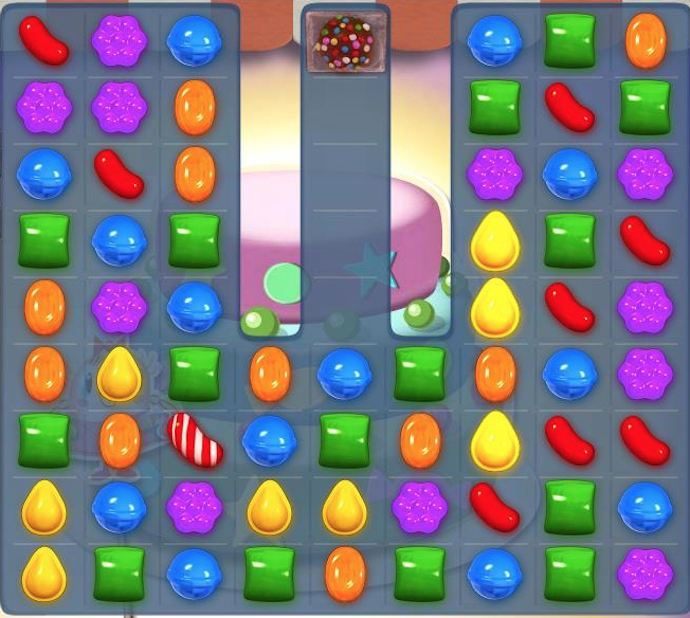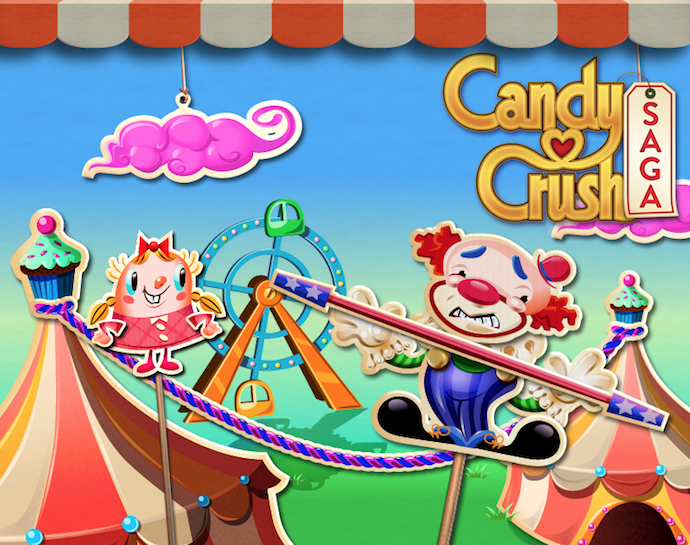‘Candy Crush Saga’ Takes Mobile Gaming World By Storm
I quit playing Farmville from pure frustration back in 2010 and avoided the Angry Birds craze last year. Generally I find more intellectually-stimulating activities to engage with on my iPhone. I even ignored the many requests from Facebook friends that urged me to try Candy Crush Saga. But the TV commercials got to me, and I’ve since been sucked in just like the app’s other 15.5 million daily players.
King, the creator of Candy Crush, is actually the first mobile-game developer to purchase air-time to advertise to US audiences. In the past, developers such as Zynga and Rovio have appeared in commercials through partnerships with advertisers such as Microsoft. But King wasted no time spreading the word of its uber-popular creation. And the move worked. By bringing Candy Crush straight into our living rooms, King has surpassed both Angry Birds and Farmville in terms of users and hours played in just six short months.
It’s easy to get hooked on Candy Crush Saga after the first 10 minutes. The game involves swapping sweets to form matches of three or more. But players don’t simply have to clear their screens a la Tetris. Each level poses a different challenge that must be mastered by eliminating matched sequences. And, unlike Tetris and other copy cats, most rounds of Candy Crush are not timed, so players can strategically use their thinking caps on without madly grabbing whatever matches they see first.

Image via Facebook/Candy Crush Saga
King sucks players in to Candy Crush by placing especially simple challenges in the beginning rounds, which ultimately grow in difficulty as the game progresses. But by that time players are often obsessed, spending days on any particular level that has them stumped.
I don’t deny being one of those players. After sailing through the first couple of stages, I sat on level 50 for several days, spending hours trying to complete it. Normally I would quit a game that posed such a challenge. But by level 50 I was involved, confident in my skills and determined to figure out the puzzle. I now sit at 65 and am once again stuck. But I’m not about to quit.
But Candy Crush is more than just a game, like some of its most successful predecessors, it implements a social aspect. And the more people who play, the more social it gets. Although only five turns are available at any time, and it takes some time to accrue them, players can ask Facebook friends to send them extra “lives.”
“The core thing with Candy Crush is that it is available on multiple platforms, and … there is the social side. It’s something you can do with friends and family – that’s something we see a lot of,” Tommy Palm, King’s Mobile Guru, told ABC News.
Candy Crush has been the No. 1 download in the Apple App Store, Google Play Store and on Facebook, and it’s free. So how is King making money? Rather than charging for the initial download, the developer nickel-and-dimes players along the way. Should they become stuck on a level too long, players can purchase extra moves, as well as tokens that allow them to paint stripes on sweets, freeze time on timed levels and remove candy pieces with a hammer. And the options aren’t cheap. Three hammer tokens cost $1.99, while the stripes charm comes with the hefty price tag of $39.99.
Of course, the fact that King is making money purely from selling cheats poses a problem for players who are determined to play the game entirely for free. Why would the developer create levels with the fragile customer in mind? King has every incentive to design the higher levels of the game so that they are impossible to conquer without purchasing cheats. And if a player has achieved… say… level 100, wouldn’t he or she be motivated to go further? It’s difficult to abandon a game after dedicating so many hours to it. So with a few cha-chings, King is getting richer and will continue to design even more challenging, unbeatable levels.










































